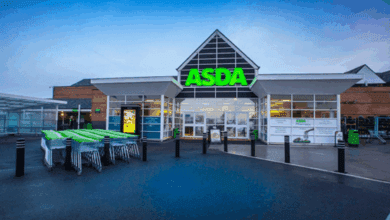Could stationery retailers be facing a future in concessions?
As the new year began, stationery retailers such as Ryman and WHSmith reported poor performances in their high street stores, while Tesco acquired Paperchase’s intellectual property, but not its stores, for the sole purpose of concessions. Could it be the only way stationery can turn a profit on the high street?

Register to get 1 free article
Reveal the article below by registering for our email newsletter.
Want unlimited access? View Plans
Already have an account? Sign in
Stationery retailers have not had a brilliant start to the year, as shown by a succession of less-than-stellar financial results from big players in this corner of the market, such as Ryman and WHSmith. For starters, Ryman reported a loss of £8.5m in earnings for the first time in 25 years, while WHSmith’s high street division slumped 2% on last year’s results.
WHSmith attributed the performance of its high street stores on “weaker” student, business and city centre trade, as footfall on UK high streets became sparse and consumers tightened their spending to cope with the rise in the cost-of-living. The retailer’s stationery sales paled in comparison to the business’s travel division, which saw revenues soar 40% across the UK and North America.
As far as the global stationery market is concerned, it is supposed to be on an upwards trajectory until 2030, according to the Stationery Products Market report. Having monitored the performance of stationery products since 2016, the report anticipates that it will rise “at a considerable rate” until the end of the decade.
In 2022 particularly, the market reportedly grew at a steady rate, while Statista corroborates that revenue in the hobby and stationery segment of the market is projected to reach $38.39bn (£31.66bn) in 2023. Meanwhile, revenue gained in the sale of stationery is projected to show an annual growth rate of 15.77% between now and 2027, according to Statista, which results in a projected market volume of $68.96bn (£56.88bn). Given this encouraging information, why have stationery stores in high streets been performing so poorly?
A good place to start is with Paperchase and the acquisition of its intellectual property by Tesco. The supermarket chain saved one aspect of the business out of administration in order to sell its branded products as concessions within its own supermarkets, veering away from its 106 brick-and-mortar stores that will be closing by the end of 2023 after administrators failed to find a buyer.
According to Craig MacCallum, the CEO of SaaS tool Optiseller, Paperchase’s collapse is a mirror to the current state of the high street, which “sadly hasn’t yet bounced back after the pandemic”.
“It was extremely sad to hear the news of another reputable, well-loved retail store falling into administration. A range of factors have led to this result for Paperchase and other stationary stores, but the economic crisis is a key driving factor,” he says. “Customers are seeking bargains and competitively priced products online. Shoppers have become reliant on online shopping for a greater range of products and prices, which is always at their fingertips.”
This was the second time Paperchase found itself in administration, and in 2017, it found itself on shaky ground years before the pandemic hit when its EBITDA plummeted 16.2% to £9.1m after a “difficult year” following the Brexit vote.
However, it wasn’t always like this. In 2015, Paperchase’s EBITDA rose more than 33% to £9.6m for the year and also secured a £50m refinancing deal to drive domestic and international growth. In 2016, its EBITDA increased a further 25% to £10.8m in the retailer’s full-year results and also saw its debut in the US market.
MacCallum supposes that the declining sales in stationery stores located within high streets could be because, in the few years, many retailers have turned their attention and focus on their e-commerce platforms and marketplaces to make the most of the people browsing online, as opposed to the dwindling numbers of in-person shoppers.
Besides concessions, which is an option for retailers with brand recognition who want to get extra sales in stores that will always see steady footfall such as supermarkets, MacCallum strongly believes that listing products on online marketplaces is “the most effective way to get your store in front of a whole new audience, who are already looking for products just like yours online”.
As part of the purchase deal with Tesco, Paperchase closed its online store earlier this month on Friday 17 February. However, looking at eBay UK listings data in relation to stationery, there are over 300,000 listings, which explains why this abundance of choice available on the internet could be another factor to the waning popularity of stationery shopping on the high street.
MacCallum says: “The stationery stock eBay has to offer will be significantly higher than the product portfolio of a brand such as Paperchase. And this is just an example of one niche sector of retail; the bigger picture is equally as opportunistic for stores looking to capitalise on marketplaces.
“Retailers and businesses who have this working in tandem with their brick-and-mortar stores are most likely to succeed during the current economic climate. E-commerce offers a wealth of opportunity and is cheaper, but coupling this with in-store personality and visibility is the winning combination.”







